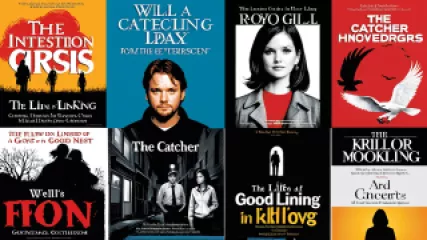Learning Crisis Intervention Strategies from Popular Books and Movies
Introduction:
Crisis intervention is a vital skill in today's fast-paced and unpredictable world. It involves providing immediate assistance to individuals who are experiencing an acute psychological, emotional, or behavioral crisis. While formal training and experience are essential for mastering crisis intervention techniques, valuable lessons can also be gleaned from popular books and movies.
In this article, we will explore how crisis intervention strategies can be learned through the analysis of characters and situations depicted in various works of fiction. By examining the actions and decisions of fictional characters facing crises, we can gain insights into effective approaches for supporting individuals in real-life crisis situations. Let's delve into the world of literature and cinema to uncover these valuable lessons.
1. Empathy and Active Listening
One of the fundamental aspects of crisis intervention is the ability to empathize with the individual in crisis. In the book "The Catcher in the Rye" by J.D. Salinger, the protagonist, Holden Caulfield, is grappling with feelings of isolation, confusion, and despair. As readers, we witness his struggle and can identify with his emotions, allowing us to cultivate empathy.
From this narrative, we learn that active listening plays a crucial role in crisis intervention. By lending a compassionate ear and fully engaging with the person in crisis, we create a safe space for them to express their thoughts and emotions. Active listening involves giving our undivided attention, maintaining eye contact, and providing verbal and non-verbal cues that show we are fully present.
"Active listening is the key to understanding and connecting with individuals in crisis. It allows us to validate their experiences and provide the support they need."
Source
1.1 Lessons from "Good Will Hunting"
The movie "Good Will Hunting" provides another powerful example of the importance of empathy and active listening. The character of Dr. Sean Maguire, played by Robin Williams, demonstrates how genuine empathy can break through emotional barriers and establish a strong therapeutic alliance.
Dr. Maguire's empathy and active listening skills enable him to connect with Will Hunting, a troubled young man struggling with his past and his own identity. Through their deep conversations, Dr. Maguire helps Will confront his fears and find meaning in his life. This highlights the transformative power of empathy and active listening in crisis intervention.
2. Building Rapport and Trust
A crucial element of crisis intervention is building rapport and trust with the individual in crisis. This foundation allows for open communication and creates an environment where the person feels comfortable seeking support and guidance. In the book "To Kill a Mockingbird" by Harper Lee, Atticus Finch serves as a prime example of a character who establishes trust with those in crisis.
Atticus Finch, a lawyer in a racially divided town, instills trust through his unwavering integrity, patience, and respect for others. His commitment to justice and fairness helps bridge divides and build relationships based on trust. As crisis interveners, we can learn from Atticus Finch's approach by embodying these qualities in our interactions with individuals in crisis.
2.1 Lessons from "Silver Linings Playbook"
In the movie "Silver Linings Playbook," the character Pat Solitano, portrayed by Bradley Cooper, navigates the challenges of mental illness and personal struggles. Through his journey, we witness the importance of building rapport with mental health professionals.
Pat's relationship with his therapist, Dr. Patel, evolves from initial skepticism to a deep bond built on mutual trust and respect. Dr. Patel's genuine care, empathy, and consistent support create a safe space for Pat to work through his challenges. This reminds us of the significance of establishing trust in crisis intervention settings.
3. Assessing Safety and Risk
When intervening in a crisis, it is crucial to assess the safety and risk factors involved. Understanding the level of immediate danger allows crisis interveners to take appropriate actions to protect the individual in crisis and ensure their well-being. In the book "Gone Girl" by Gillian Flynn, the main character, Amy Dunne, presents a complex case that necessitates an evaluation of safety and risk.
Amy Dunne's actions and behavior throughout the story raise concerns about her mental state and the potential harm she may inflict on herself or others. This highlights the importance of conducting thorough risk assessments to determine the appropriate level of intervention required.
3.1 Lessons from "One Flew Over the Cuckoo's Nest"
The novel "One Flew Over the Cuckoo's Nest" by Ken Kesey and its film adaptation provide a thought-provoking exploration of mental health institutions. The character of Randle McMurphy challenges the authority of the oppressive Nurse Ratched, emphasizing the need to critically assess institutional practices.
This narrative underscores the importance of evaluating the safety and risk factors not only within the individual crisis but also within the systems and institutions that are meant to provide support. Crisis interveners should be vigilant in recognizing potential systemic issues that may exacerbate the crisis and impede effective intervention.
Conclusion:
Books and movies can serve as valuable sources of inspiration and learning when it comes to crisis intervention strategies. Through the analysis of characters and situations depicted in works of fiction, we can glean insights into empathy, active listening, building rapport and trust, and assessing safety and risk. By applying these lessons to real-life crisis intervention scenarios, we can enhance our skills and provide more effective support to those in need.
Remember, crisis intervention is a complex field that requires formal training and experience. However, supplementing our knowledge with insights from literature and cinema can broaden our perspectives and deepen our understanding of the human experience.
So grab a book or movie, immerse yourself in captivating narratives, and discover the invaluable lessons they hold for crisis intervention.






